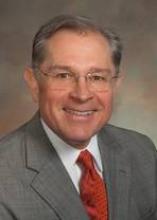CHICAGO – As its annual House of Delegates meeting opened, officials from the American Medical Association sought to convince members that the organization remains as vital as ever to advancing physicians’ cause in Washington, in the state houses, and with insurers.
The pep talk came as the officials noted that, after a slide in membership over the last few years, the AMA added 1,636 members in 2011, for a gain of 0.8%. The group ended the year with 217,490 members.
Overall, there are about 954,000 physicians in America, according to AMA data.
"This past year, our membership increased modestly," said Dr. James Madara, executive vice president and chief executive officer of the AMA. "And while we are pleased, we are hardly complacent."
The AMA continues to feel the fallout related to its support of the Affordable Care Act (ACA). Its endorsement led to membership defections and fractious debate at the House of Delegates meetings over the last few years.
While the current meeting was shaping up to be less controversial, in committee meetings on Sunday – held in advance of Monday and Tuesday’s floor debates and votes – some delegates expressed their continued dismay with the health reform law, in particular the Independent Payment Advisory Board (IPAB).
In his address on Saturday, AMA President Peter Carmel made oblique reference to the organization’s role in health reform. He said that, by using the AMA’s position as "the indisputable voice of America’s physicians," the organization had become an advocate for health reform and for the uninsured in 2007.
Without citing the ACA by name, Dr. Carmel highlighted its achievements. He noted that 2.5 million Americans under age 26 years had gained insurance through their parents, and that 100 million people no longer had to worry about lifetime insurance caps. Another 54 million had gained prevention and wellness coverage, Dr. Carmel said.
"All of this has already happened – today – regardless of what the Supreme Court decides," he added.
His recitations drew lukewarm applause.
Dr. Carmel acknowledged that the ACA and the changing health care environment had put physicians on edge. "The only thing worse than that anxiety is the fear many physicians have: the fear that they’re being lied to," he said. For instance, said Dr. Carmel, "If Congress really wants to improve the health care system, why hasn’t it eliminated the [Sustainable Growth Rate formula]?"
He said that the AMA had notched several recent legislative and regulatory victories, including leaning on the Centers for Medicare and Medicaid Services to make accountable care organization criteria more physician friendly and to delay the ICD-10 implementation.
But Dr. Madara said it was not enough. "The AMA must bring a tighter focus to what we do so that our efforts are concentrated on the long term," he said.
The AMA’s senior management has spent months putting together what he called a "rolling 5-year strategic plan." The goal is to ensure that the AMA attracts a broader physician base and has the "credibility, competence, and resources to make a significant impact," he said.
The areas of most intense focus will be improving health outcomes, accelerating change in medical education, and "shaping delivery and payment models that demonstrate high-quality care and value while enhancing physician satisfaction and practice sustainability," Dr. Madara said.
In the outcomes area, the AMA will build on its Physician Consortium for Performance Improvement. It will select two to three outcomes this year to put on a national "AMA dashboard" that will be promoted to quality improvement organizations and physicians. The outcomes will be tracked and used to evaluate impact on productivity and costs.
The goal in the education area is to close the gap between how physicians are being trained and the future needs of the health system, Dr. Madara said. The AMA will push for a new emphasis on learning around patient-centered care and performance improvement and understanding of health care financing and delivery.
Finally, the AMA aims to study what makes physicians happy and then use that data to help develop new practice models, he said. "We will use this information to drive and implement change across practice settings by showcasing delivery and payment models that demonstrate high quality and value while preserving, restoring, and enhancing professional satisfaction for physicians," said Dr. Madara.
The process won’t be easy, but he said that the AMA had hired Dr. Francis J. Crosson to help. Dr. Crosson, a former executive on the physician side of Kaiser Permanente and a former Medicare Payment Advisory Commission member, will join the AMA on July 1 as the vice president of professional satisfaction, care delivery, and payment.



